
Exciting new series on “Voice, Body and Movement for Lawyers – How to connect with the jury and find Justice Through Dramatic Technique!”
Click here to find out more
Generative AI platforms can create diverse content, such as marketing materials, translations, and source code. However, they also raise various legal issues, such as who owns the output, whether it infringes on existing works, and whether it is eligible for protection. As generative AI becomes more widespread and used by employees in different industries, companies need to be careful about how they adopt and use these platforms, especially how they handle the output and integrate it with other information.
This program, by Emily Tait and Carl Kukkonen, will discuss the legal challenges of using generative AI, and the potential impact of the U.S. Supreme Court’s ruling in Warhol Foundation v. Goldsmith.
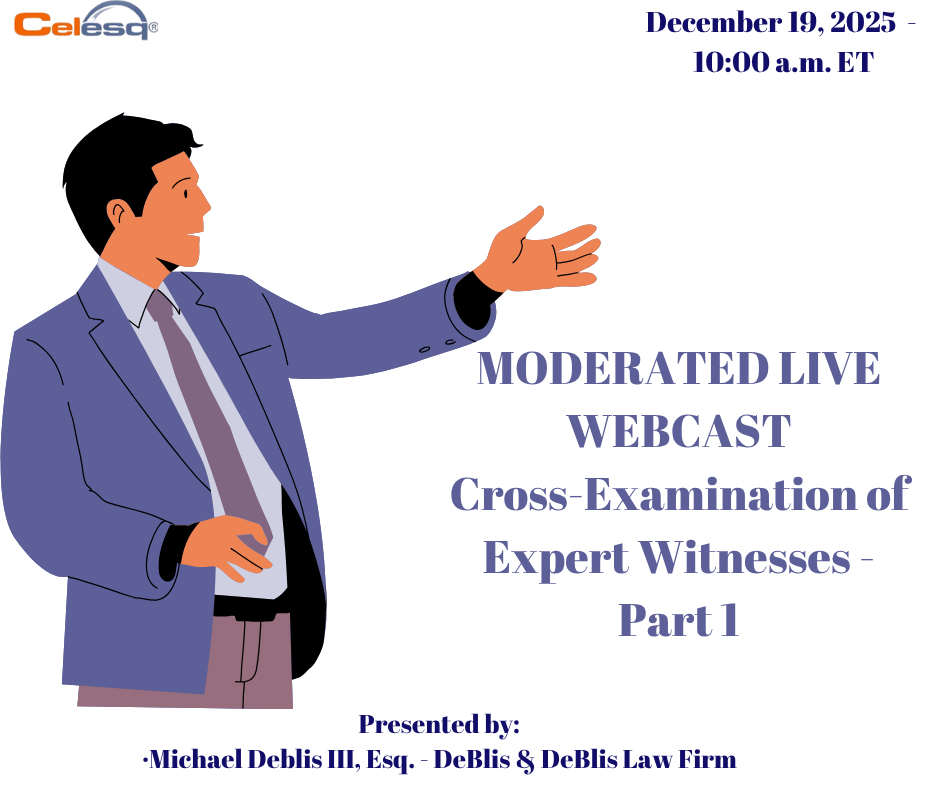
MODERATED-Part 1 of 2 - In this presentation, I will discuss strategies for cross-examining expert w...

MODERATED-Attorneys may offer a crucial role in discussing advance (end of life) care planning optio...
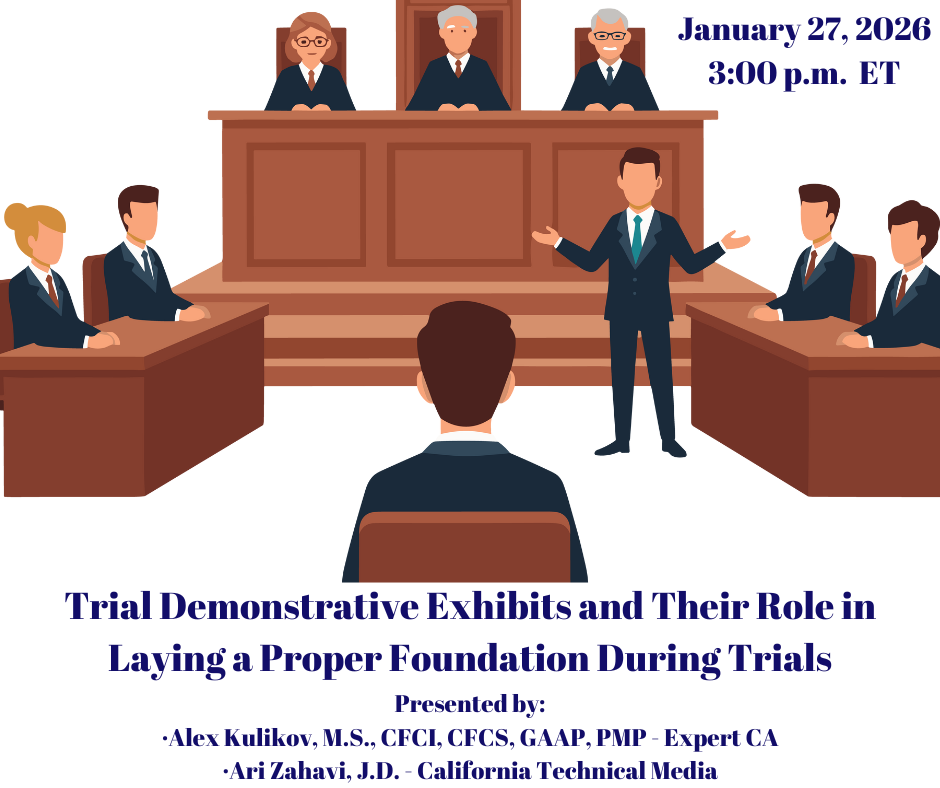
A litigator’s role is to shape how key decision-makers - judges, jurors, and opposing counsel ...
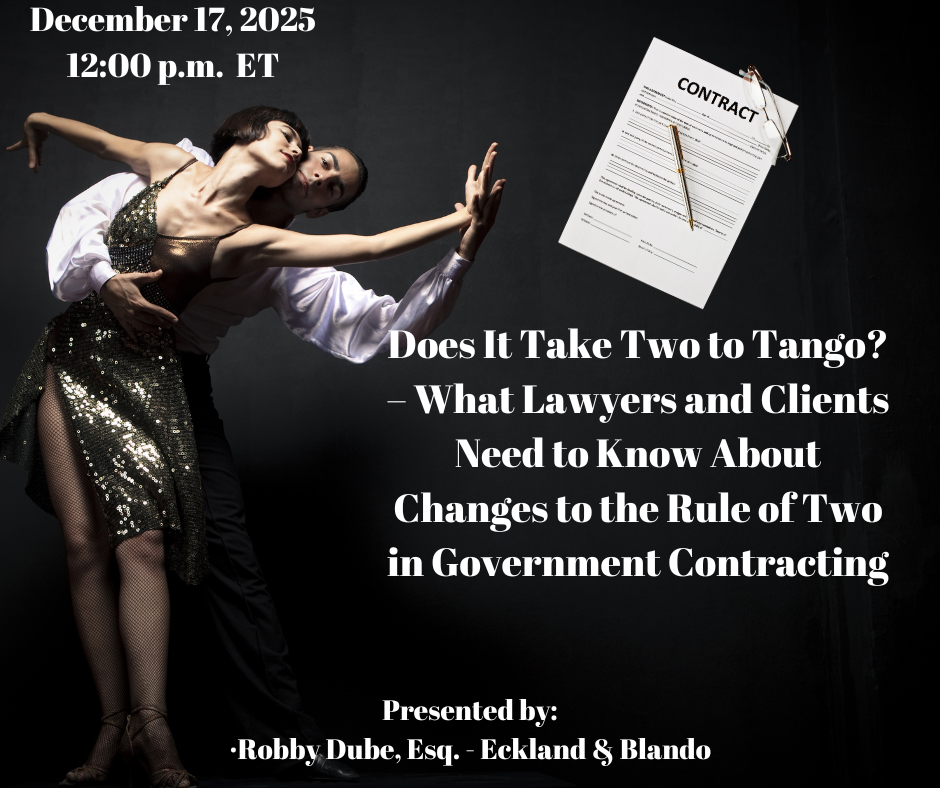
For decades, the Rule of Two in government contracting required federal agencies to set aside contra...
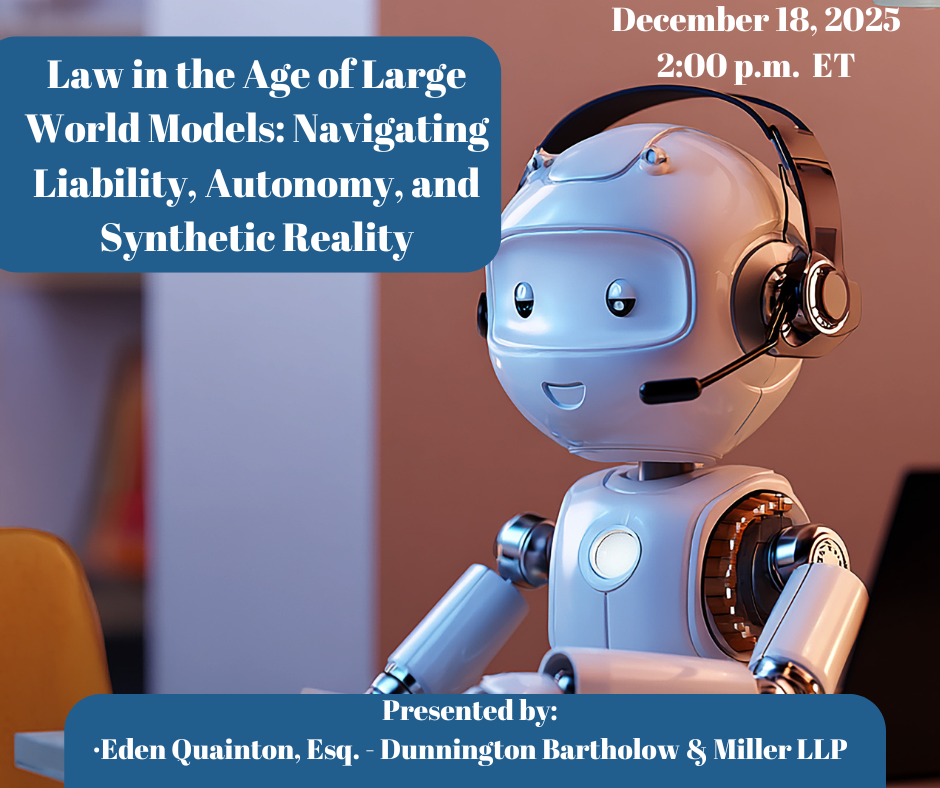
Large World Models (LWMs)— the next generation of AI systems capable of generating...
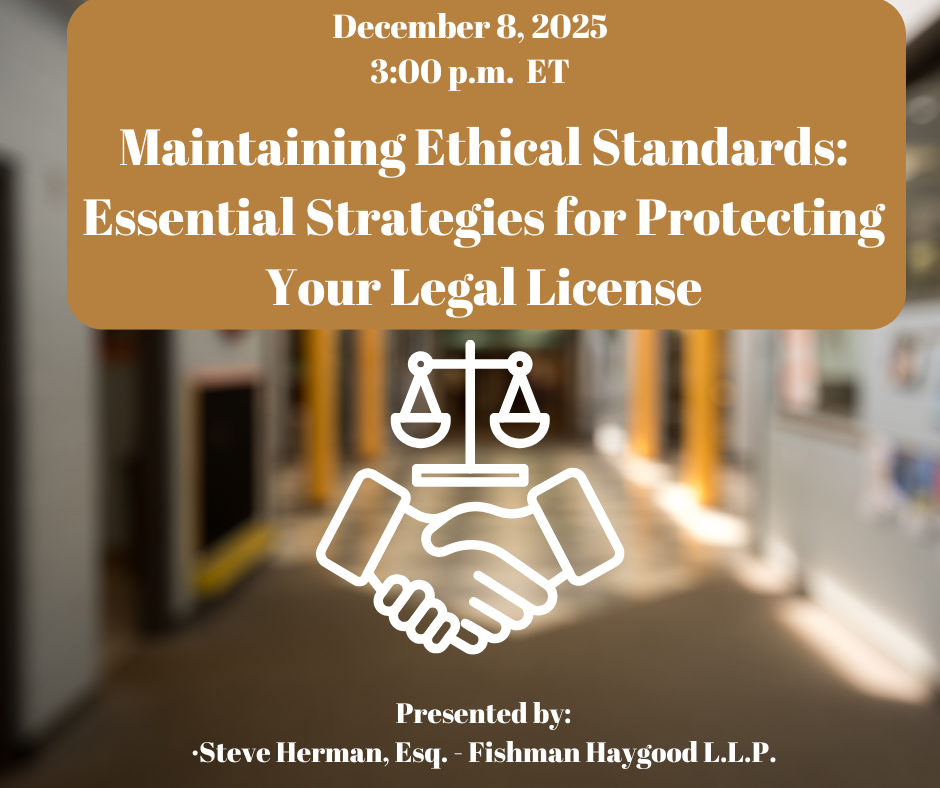
Join Steve Herman on December 8, 2025, for "Maintaining Ethical Standards: Essential Strategies for ...
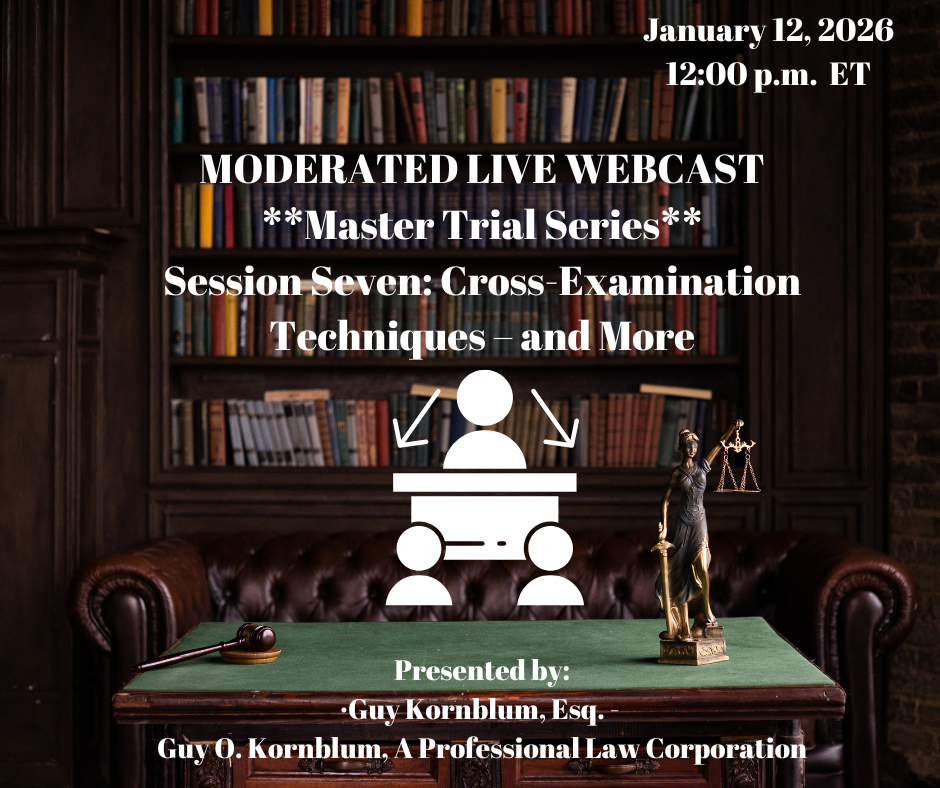
MODERATED-Session 7 of 10 - Mr. Kornblum, a highly experienced trial and litigation lawyer for over ...
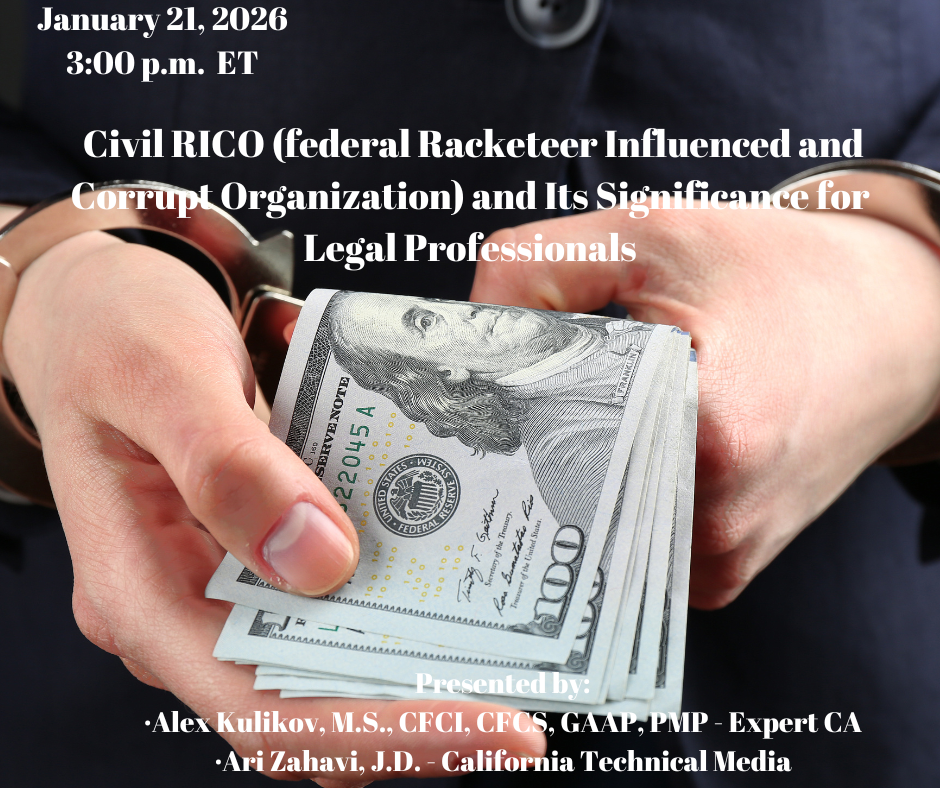
The Civil RICO framework allows individuals and businesses to pursue legal action for damages from a...
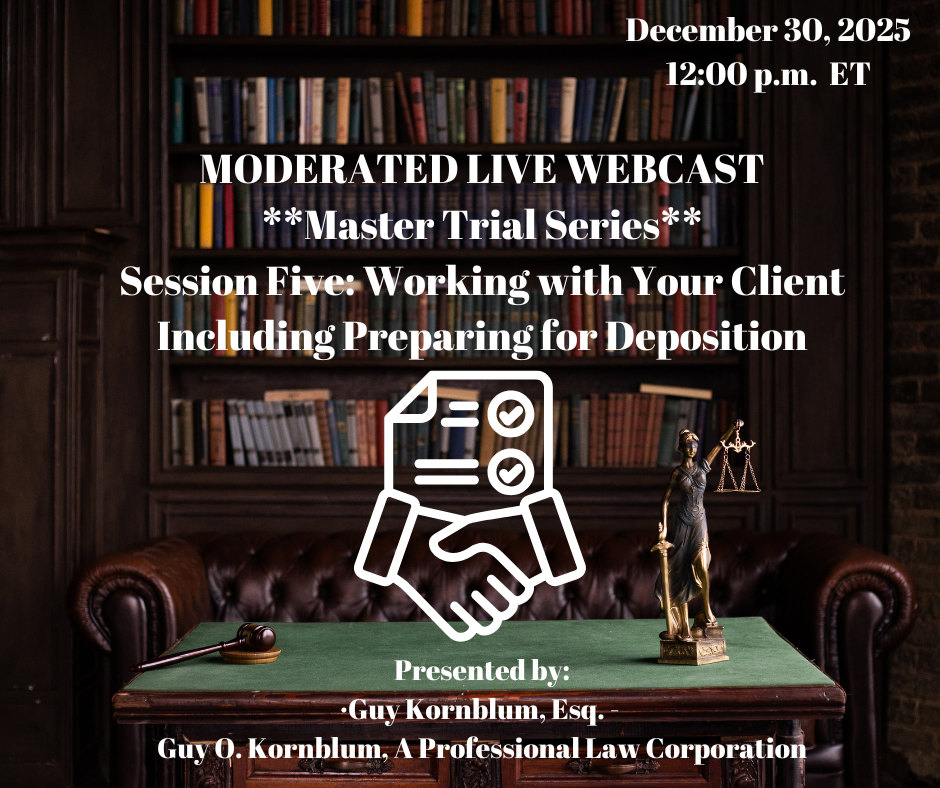
MODERATED-Session 5 of 10 - Mr. Kornblum, a highly experienced trial and litigation lawyer for over ...
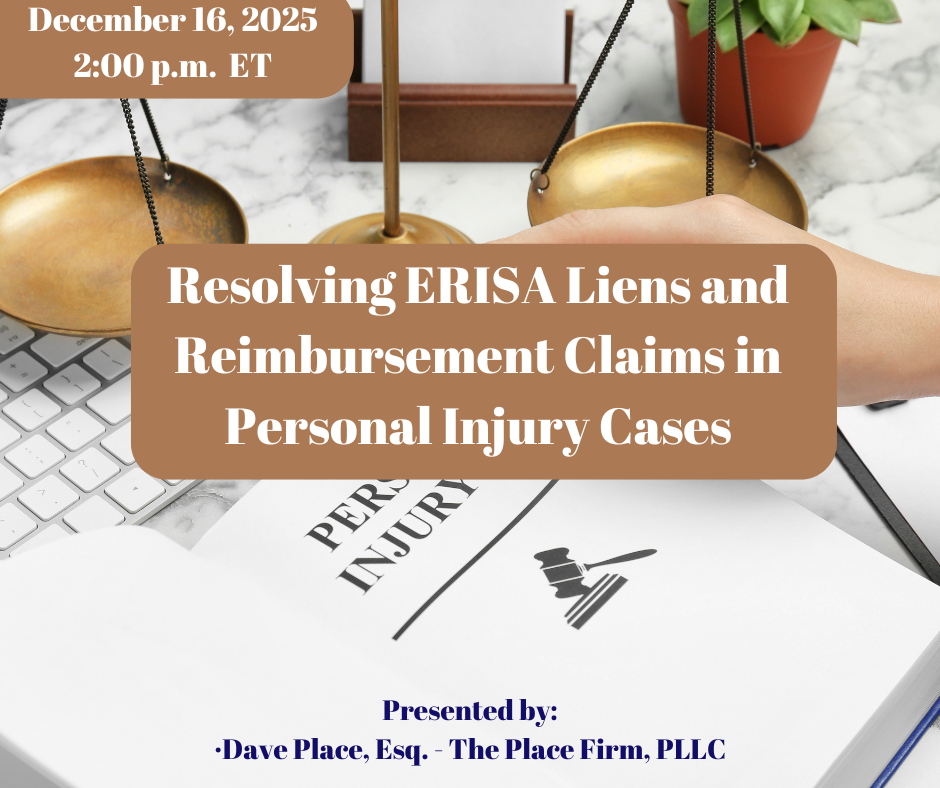
Dave Place, Esq., Founder of The Place Firm, will present a CLE providing practical tips to empower ...